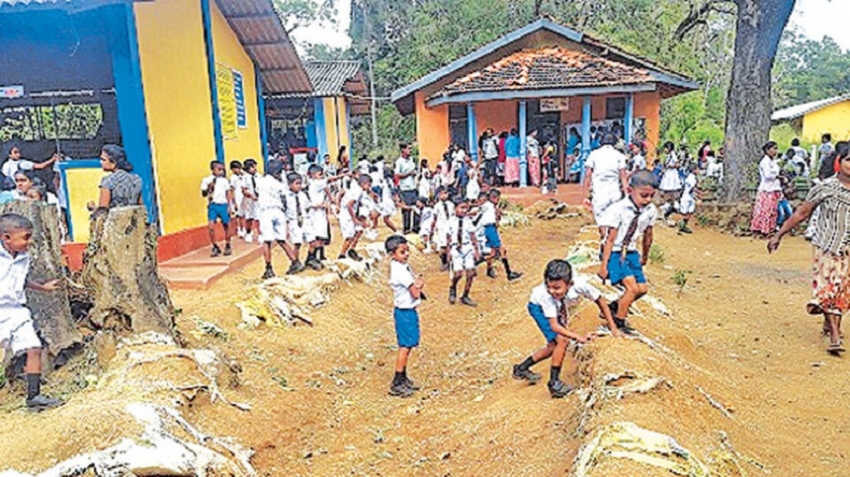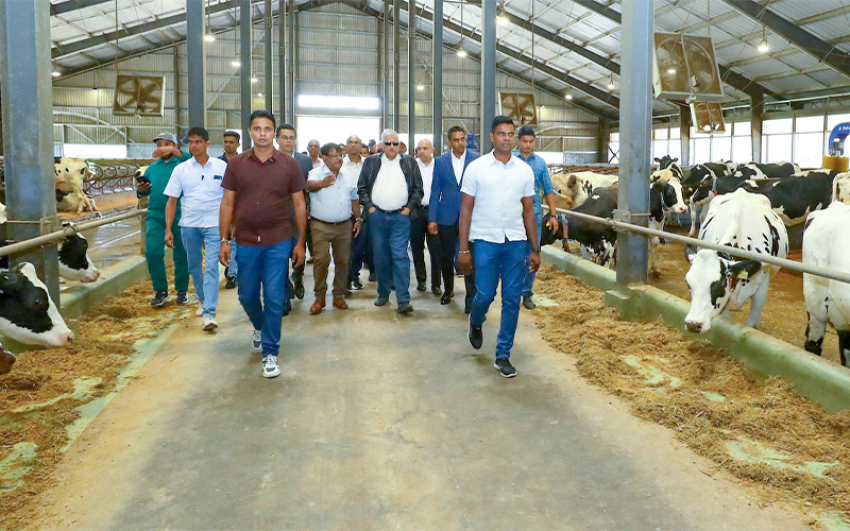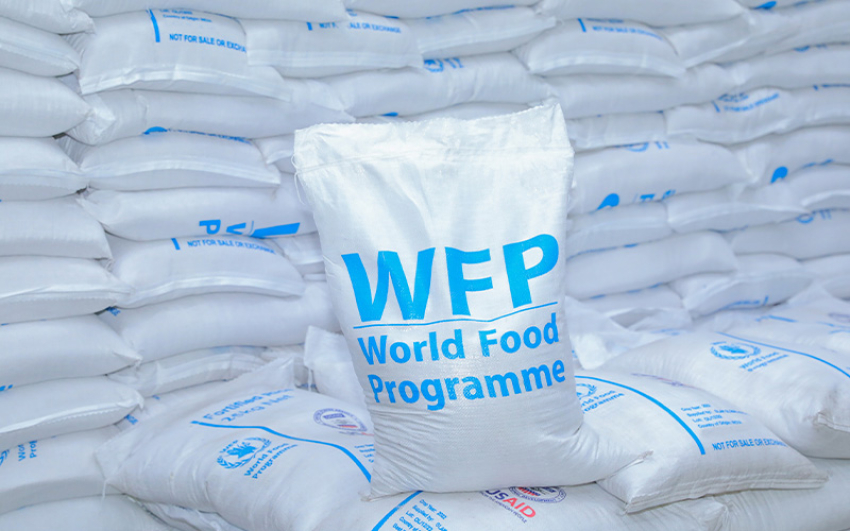Infections in your child’s respiratory Tract
B.J.C. Perera
Children are prone to contract some respiratory diseases from other close contacts such as family members, school mates, other children in nurseries and day-care centres.
Children are prone to contract some respiratory diseases from other close contacts such as family members, school mates, other children in nurseries and day-care centres.
Advice on management of respiratory tract infections is one of the prime tasks of paediatricians. These are quite common. Some of them are mild and do not need much attention while others are quite serious and accounts for considerable morbidity and quite unfortunately, some mortality.
Children tend to catch a variety of respiratory bugs in the atmosphere and are also particularly prone to contract some respiratory diseases from other close contacts such as family members, school mates, other children in nurseries and day-care centres. Many of these are caused by a legion of viruses but quite a few of them are also a result of infection by bacteria.
The commonest health problem that many children get is common cold. It has been estimated that a normal child, on average, tends to get nine to 10 colds per year. Some of them get much more than this number. It is caused by different viruses but the general presentation of symptoms and signs are very similar whatever the causative virus is. It usually starts with upper respiratory complaints of nasal discharge or a runny nose and blockage of the upper respiratory passages in and around the nose and throat.
It may be accompanied by fever which may sometimes be quite high. The nose block could be very troublesome in little babies in whom it interferes with breathing, feeding and sleep. A dry cough is also a reasonably common feature. It is often a mild illness and just needs some rest, adequate oral fluids, nutritious food and simple drugs to bring down the fever and accompanying body aches.
Symptomatic treatment with anti-fever drugs and antihistamines are all that is required. Antibiotics are not of any use in common colds as they are quite ineffective against these viruses. Although many children are prescribed various types of nose drops, there is no agreement in medical literature about the usefulness of these medications. A complete recovery could be expected in about five to seven days. However, in some children, the common cold is complicated by secondary or subsequent bacterial infections particularly of the throat and sometimes the lungs, leading to tonsillitis and bacterial pneumonia.
The virus itself, under certain circumstances, goes down to the lungs and causes viral pneumonia. These complications would need further treatment and complicating bacterial infections would then need antibiotics.
Some specific viruses tend to cause some identified special problems in the respiratory tract. One variety causes inflammation in the area of the voice box or larynx and the larger breathing tubes or bronchi that lead off from the larynx. This leads to some degree of obstruction to the uppermost components of the breathing apparatus. The disease itself is known as viral croup. In those affected children, a peculiar high-pitched sound comes out when the child breathes in. This noise is called stridor. These children need careful assessment and they often need hospitalisation. In addition to the conventional drugs, medications to reduce the inflammation and swelling of the larynx and upper airways may be needed.
A particular group of viruses tend to attack the distal portions of the breathing tubes known as bronchioles. They cause inflammation and swelling of the inner lining of these air tubes and the condition is known as bronchiolitis. These tubes are of a fine calibre and are even smaller in infants and children under three years. Even minor degrees of swelling tends to have a significant effect on the diameter of these small airways and this leads to markedly significant compromisation of the flow of air in and out of the lungs.
Sometimes the obstruction is made worse by the pliable airways getting even smaller when the baby breathes out leading to an impediment to the air flowing out of the lungs. This phenomenon leads to significant air trapping in the lungs. This condition, when it is marked, leads to considerable disturbance of the functioning of the lungs and the child becomes quite ill. Many children with bronchiolitis would need hospitalisation. It is a common disease in the Western developed world, especially during the cold winter months but fortunately, the disease is not all that common in the tropics.
A significant respiratory problem in children is pneumonia. The term refers to inflammation of the lungs or a part of a lung. In the third world, this disease accounts for significant mortality in children aged less than five years. The involvement of the lungs may be diffusely centred around the branches of the airways, the condition being known as bronchopneumonia or it may involve an entire portion of a lung, the situation then being labelled as lobar pneumonia. This strict differentiation is not always possible due to considerable overlap of the areas of the lung that are affected.
The cause of pneumonia may be viral but more commonly, especially in the developing countries, it is due to bacteria. This is a disease that is generally heralded by high fever, cough, breathing difficulties and in some cases, chest pains. The child often looks quite ill, short of breath and in smaller babies, it could be quite devastating. The main problem is the solidification of areas of the lung which normally contains air. When this affects rather large areas of the lung, it leads to a tremendous disturbance of the gas exchange functions of the lungs and reduction of the essential oxygen supplies to the distant tissues. This could lead to catastrophic effects on many organs as the life-giving oxygen is essential for survival.
The lungs respond to the needs of the tissues to obtain oxygen by increasing the rate and depth of breathing. This manifests as breathing difficulties and the child has to exert a lot just to breathe. This, in effect, could lead to fatigue of the overused muscles of breathing leading to a vicious cycle that has disastrous effects on the child. The presentation varies widely in severity and depends on the severity and duration of the problem.
The diagnosis is confirmed by changes seen in x-ray films of the chest but it is extremely important to point out that one could get serious involvement of the lungs with relatively little x-ray changes, especially when the films are taken very early in the disease.
Bacterial pneumonia has some accompanying complications such as the spread of the causative organism getting into the bloodstream and spreading all around the body, spread of infection to adjoining tissues such as the outer lining known as pleura of the lung leading to a condition known as pleurisy and accumulation of fluid or pus between the lung and the chest wall. In some cases, the continuing damage to the tissues leads to the formation of a lung abscess. The definitive treatment of bacterial pneumonia need intensive antibiotic therapy, often initially via the intravenous route, Recovery is heralded by a settling of the fever, amelioration of breathing difficulties and improvement in the general condition of the child.
What is important in childhood respiratory diseases is early diagnosis and appropriate treatment. Some of the features such as fever, feeding problems, cough, especially a cough that gets worse progressively, breathing difficulties and chest pains are significant pointers to the diagnosis and severity of the condition.
In addition, two features that even parents could observe have been shown to be reliable signs of pneumonia. The first is the rate of breathing. Increased rates of breathing have been found to be a very important pointer to a diagnosis of pneumonia.
The second is the presence of chest in-drawing during the phase of breathing in. In normal breathing, the lower part of the chest moves out during the time the child breathes in. In the cases where chest in-drawing is seen, the lower part of the chest gets drawn in or sucked in during the phase of breathing in. This in-drawing of the chest is also a sign that the pneumonia is quite severe. The presence of these two features increases the likelihood of pneumonia that much higher.
The more severely affected children with respiratory infections need hospital care. Oxygen may be needed in some cases. Various drugs are now available to deal with infection as well as the functional effects of the infection on the working of the lungs. Drugs may also be required to facilitate the movement of air through the narrowed airways by relaxing and dilating these tubes.
Only the very severely affected will need intensive care and occasionally there will be the need for a ventilator or a “breathing machine” for those children who show major disruption of their lung functions. Generally, the word “pneumonia” conjures up visions of undesirable outcomes in the minds of parents and put great fear into their hearts. Although it could be a serious problem, the modern medical armamentarium is able to deal with most cases quite effectively. Treatment should be for a sufficient length of time to secure a complete recovery. Unfortunately, it is complicated by the emergence of organisms that are resistant to some antibiotics. If the antibiotic resistance problem continues to increase in our country, then it will have major implications on treatment schedules in the future.
It is also noteworthy that some of the more severe forms of pneumonia could be prevented by using certain specific vaccines. The pneumococcal vaccine and the Hib vaccine protect against bacterial pneumonia caused by the organisms known as Streptococcus pneumoniae (Pneumococcus) and Haemophilus influenzae type b(Hib).
The Hib vaccine is now provided free of charge to all children through the National Immunisation Programme of the Ministry of Health. Improved living conditions and access to optimal healthcare are two other factors that have been shown to have a marked effect in reducing the morbidity and mortality from respiratory infections the world over. However, such developments cannot be expected to completely eradicate the risks of these infections as these are quite a problem even in developed countries where the standards of living are much better.
(Dr. B. J. C. Perera, MBBS(Cey), DCH(Cey), DCH(Eng), MD(Paed), MRCP(UK), FRCP(Edin), FRCP(Lon), FRCPCH(UK), FSLCPaed, FCCP, Hony FRCPCH(UK), Hony. FCGP(SL), is Specialist Consultant Paediatrician and Honorary Senior Fellow, Postgraduate Institute of Medicine, Colombo University; Joint Editor–Sri Lanka Journal of Child Health, Section Editor, Ceylon Medical Journal; Founder Chairman, Sri Lanka Forum of Medical Editors, 2016; Past President, Colombo Medical School Alumni Association (CoMSAA) – 2015; Past President, Sri Lanka Medical Association (SLMA) (2013); and Founder President, Sri Lanka College of Paediatricians (1996-1997))




















